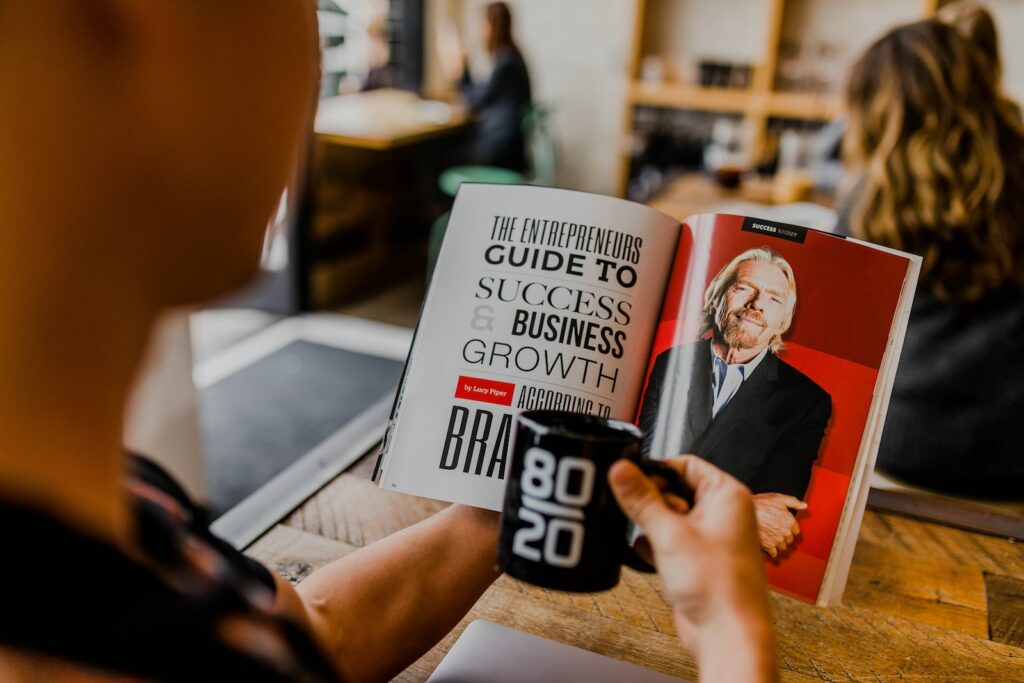In the contemporary job market, LinkedIn has emerged as a pivotal platform for job seekers, serving as a digital resume and networking hub. With over 900 million users globally, LinkedIn offers unparalleled access to potential employers, industry leaders, and professional opportunities. Unlike traditional job boards, LinkedIn allows users to present a comprehensive view of their professional identity, showcasing not only their work history but also their skills, endorsements, and professional connections.
This multifaceted approach enables job seekers to stand out in a crowded marketplace, making it essential for anyone serious about advancing their career to cultivate a robust LinkedIn presence. Moreover, LinkedIn is not merely a platform for job listings; it is a dynamic ecosystem where professionals can engage with content relevant to their fields, participate in discussions, and stay updated on industry trends. Recruiters increasingly rely on LinkedIn to source candidates, often conducting searches based on specific skills and experiences.
This means that having an optimized profile can significantly enhance visibility to recruiters and hiring managers. By understanding the importance of LinkedIn, job seekers can leverage this platform to not only find job opportunities but also to build a personal brand that resonates with their career aspirations.
Key Takeaways
- LinkedIn is a crucial tool for job seekers to connect with potential employers and build a professional online presence.
- A professional and engaging LinkedIn profile should include a clear and professional profile picture, a compelling headline, and a detailed summary of skills and experience.
- Building a strong network on LinkedIn involves connecting with colleagues, industry professionals, and alumni, and engaging with their content.
- Showcasing skills and experience on LinkedIn can be done through detailed job descriptions, relevant projects, and endorsements from connections.
- Utilizing LinkedIn for job search and networking involves using the platform’s job search feature, reaching out to connections for referrals, and engaging with industry-specific content.
Creating a Professional and Engaging LinkedIn Profile
Make a Visual Impact with a High-Quality Profile Picture
A well-structured profile begins with a high-quality profile picture; research indicates that profiles with professional photos receive 14 times more profile views than those without. The image should convey professionalism while also reflecting the individual’s personality.
Craft a Compelling Headline and Summary
Alongside the photo, a compelling headline is crucial. Instead of simply listing a job title, consider incorporating keywords that reflect your expertise and aspirations. The summary section of your profile is another critical component that deserves careful attention. This is your opportunity to tell your story—highlight your career journey, key achievements, and what you are passionate about in your field. A well-crafted summary should be concise yet informative, ideally between 3-5 short paragraphs.
Optimize Your Profile for Searchability
Incorporating relevant keywords can also enhance your profile’s searchability, making it easier for recruiters to find you based on specific skills or experiences.
Building a Strong Network on LinkedIn
Building a strong network on LinkedIn is essential for maximizing the platform’s potential. Networking on LinkedIn goes beyond merely adding connections; it involves cultivating relationships that can lead to opportunities and collaborations. Start by connecting with colleagues, former classmates, and industry peers.
When sending connection requests, personalize your message to explain why you want to connect. This approach not only increases the likelihood of acceptance but also lays the groundwork for meaningful interactions. Once you have established connections, it is important to engage with them actively.
Regularly liking, commenting on, or sharing their posts can help maintain visibility within your network. Additionally, consider reaching out to connections for informational interviews or coffee chats—these conversations can provide valuable insights into different roles or industries and may even lead to job referrals. By nurturing these relationships over time, you create a supportive network that can be instrumental in your job search and career development.
Showcasing Your Skills and Experience on LinkedIn
Showcasing your skills and experience effectively on LinkedIn is vital for attracting the right opportunities. The experience section should be detailed yet concise, highlighting key responsibilities and achievements in each role. Use bullet points for clarity and focus on quantifiable results where possible.
For instance, instead of stating “managed social media accounts,” you could say “increased social media engagement by 40% over six months through targeted campaigns.” This not only demonstrates your capabilities but also provides concrete evidence of your impact in previous roles. Additionally, the skills section allows you to list specific competencies relevant to your profession. It is advisable to include both hard skills (like programming languages or software proficiency) and soft skills (such as communication or leadership abilities).
LinkedIn allows connections to endorse these skills, which adds credibility to your profile. To further enhance this section, consider seeking endorsements from colleagues or supervisors who can vouch for your expertise.
Utilizing LinkedIn for Job Search and Networking
LinkedIn serves as a powerful tool for job searching and networking when used strategically. The platform features a dedicated job search function that allows users to filter opportunities based on various criteria such as location, industry, and experience level. Setting up job alerts can help you stay informed about new postings that match your interests, ensuring you never miss an opportunity.
Additionally, many companies post job openings directly on their LinkedIn pages, providing insights into company culture and values that can be beneficial during the application process. Networking through LinkedIn can also lead to job opportunities that may not be publicly advertised. Engaging with content shared by companies or industry leaders can increase your visibility within those circles.
When you comment thoughtfully on posts or share relevant articles, you position yourself as an informed professional in your field. Furthermore, reaching out directly to hiring managers or recruiters with personalized messages expressing interest in their company can open doors that might otherwise remain closed.
Engaging with LinkedIn Groups and Content
Expanding Your Network through LinkedIn Groups
Participating in LinkedIn groups is an excellent way to expand your network and engage with like-minded professionals in your industry. These groups often serve as forums for discussion, knowledge sharing, and collaboration on various topics relevant to specific fields or interests. Joining groups related to your profession allows you to connect with individuals who share similar goals and challenges, fostering relationships that can lead to mentorship or job referrals.
Sharing Your Expertise through Content
Engaging with content on LinkedIn is equally important. Regularly sharing articles, insights, or personal experiences related to your field not only showcases your expertise but also encourages interaction from your network. When you post content that resonates with others, it can lead to increased visibility and engagement from professionals outside your immediate connections.
Establishing Yourself as an Active Professional
Additionally, commenting on posts from industry leaders or participating in discussions can position you as an active member of your professional community.
Leveraging LinkedIn Recommendations and Endorsements
Recommendations and endorsements are powerful tools for enhancing your credibility on LinkedIn. Recommendations are written testimonials from colleagues or supervisors that highlight your skills and contributions in previous roles. These endorsements provide social proof of your capabilities and can significantly influence potential employers’ perceptions of you.
Endorsements for skills listed on your profile further bolster your credibility. While these endorsements may seem less formal than recommendations, they still play a crucial role in validating your expertise.
To encourage endorsements from connections, consider endorsing their skills first; this often prompts reciprocity. Additionally, regularly updating your skills section based on evolving industry trends ensures that your profile remains relevant and appealing to recruiters.
Optimizing Your LinkedIn Profile for Search Engines
Optimizing your LinkedIn profile for search engines is essential for increasing visibility both within the platform and beyond it. Start by incorporating relevant keywords throughout your profile—these should reflect the terms potential employers might use when searching for candidates with your background. Focus on including these keywords in key sections such as your headline, summary, experience descriptions, and skills list.
Another important aspect of optimization is ensuring that your profile is complete and up-to-date. LinkedIn favors profiles that are fully filled out; this includes having a professional photo, an engaging summary, detailed work experience, and a comprehensive skills section. Additionally, regularly posting updates or articles can improve your profile’s visibility in search results.
Engaging with content consistently signals to both LinkedIn’s algorithm and potential employers that you are an active participant in your professional community. By understanding the nuances of LinkedIn—from creating an engaging profile to leveraging networking opportunities—job seekers can significantly enhance their chances of finding meaningful employment in today’s competitive landscape.
FAQs
What is LinkedIn Optimization for Job Seekers?
LinkedIn optimization for job seekers refers to the process of enhancing your LinkedIn profile to make it more attractive to potential employers and recruiters. This includes optimizing your profile with relevant keywords, showcasing your skills and experience, and networking with industry professionals.
Why is LinkedIn Optimization Important for Job Seekers?
LinkedIn optimization is important for job seekers because it can increase your visibility to potential employers and recruiters. A well-optimized profile can help you stand out from the competition and increase your chances of being contacted for job opportunities.
What are the Key Elements of LinkedIn Optimization for Job Seekers?
Key elements of LinkedIn optimization for job seekers include creating a compelling headline and summary, showcasing your skills and experience, obtaining recommendations and endorsements, joining relevant groups, and engaging with industry professionals through posts and comments.
How Can Job Seekers Optimize Their LinkedIn Profiles for Keywords?
Job seekers can optimize their LinkedIn profiles for keywords by including relevant industry-specific terms in their headline, summary, and experience sections. It’s important to use keywords that are commonly used in job descriptions for the types of roles you are targeting.
What are Some Tips for Networking on LinkedIn as a Job Seeker?
Some tips for networking on LinkedIn as a job seeker include connecting with industry professionals, engaging with their content, joining relevant groups, and reaching out for informational interviews. It’s important to build genuine relationships and offer value to your connections.
How Can Job Seekers Use LinkedIn to Find Job Opportunities?
Job seekers can use LinkedIn to find job opportunities by setting up job alerts, following companies of interest, and actively networking with industry professionals. Additionally, LinkedIn’s job search feature allows users to search for open positions and apply directly through the platform.





